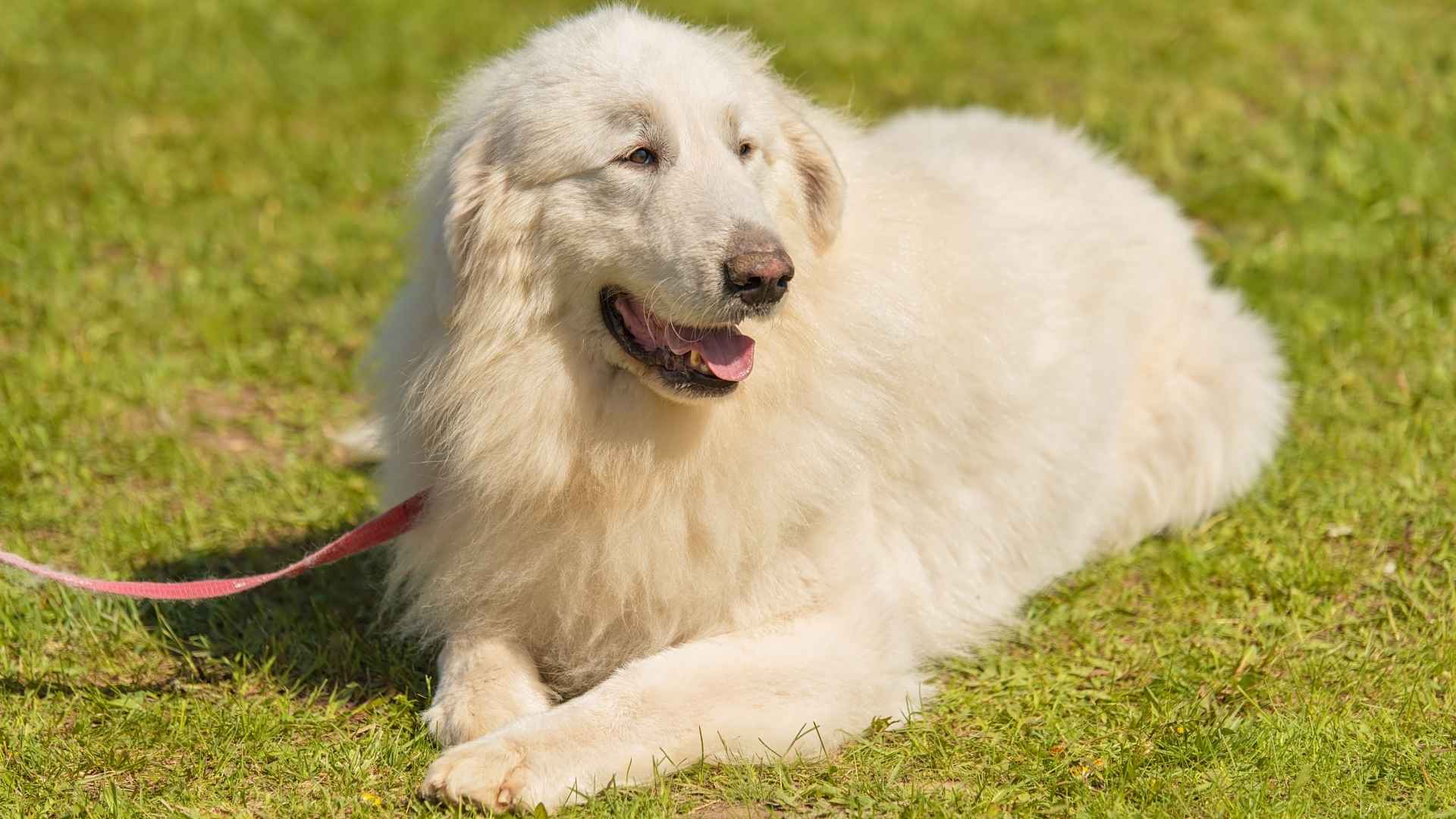Have you ever looked down at your dog’s paws and wondered why this pup has more toes than usual?
In rare cases, dogs are born with extra toes, a condition known as polydactyly. While it may seem unusual at first, it’s typically harmless unless one of the additional digits gets caught on something.
Most cases don’t require treatment unless there’s a risk of injury or discomfort. In fact, for some breeds, those extra toes are a natural trait, sometimes even a requirement in breed standards.
Some of these dogs developed polydactyl paws for a reason: to navigate rocky trails, icy slopes, or unstable terrain with ease. Whether you’re curious about your own pup’s toes or fascinated by nature’s designs, these breeds are more than a genetic quirk.
By the end of this list, you’ll likely be eyeing one of these uniquely equipped companions for your own pack.
Dog Breeds Born with Extra Toes
From alpine guardians to cliff-hunting acrobats, these seven polydactyl stars prove extra digits are evolution’s toolkit. Read on to discover the dogs whose bonus toes boost balance, traction, and agility.
1. Australian Shepherd
The Australian Shepherd is a nimble, intelligent herder built for speed and problem-solving. While polydactyly is not common, some Aussies are born with extra toes, typically on the hind feet, a trait thought to have supported better footing during livestock work on rocky slopes.
Echoes of a Rugged Past
Historically, extra digits may have helped with balance and traction on uneven or steep terrain, enhancing the breed’s agility.
According to ASHGI, Aussies usually have front dewclaws (sometimes removed), and in rare cases, rear dewclaws, even doubles, which may also be removed if loosely attached.
Is It a Problem?
In most cases, no. This genetic variation isn’t harmful unless the dewclaw is floppy or at risk of injury. If the toe is secure and causes no issues, most veterinarians suggest leaving it. It’s simply a rare but harmless trait tied to the breed’s adaptable nature.
2. Great Pyrenees
The Great Pyrenees is a majestic working dog, widely recognized among mountain dog breeds for guarding livestock in the rugged mountains between France and Spain.
Some are born with extra toes, most commonly double dewclaws on the hind feet, which historically helped them traverse snowy, uneven terrain with better grip and stability.
Built for the Slopes
The additional digits weren’t just ornamental; they improved traction and balance on steep, slippery mountain paths. Though not all Great Pyrenees are polydactyl, those that are may have a slight functional advantage when working in high altitudes or harsh terrain. This trait highlights the breed’s adaptability and mountain heritage.
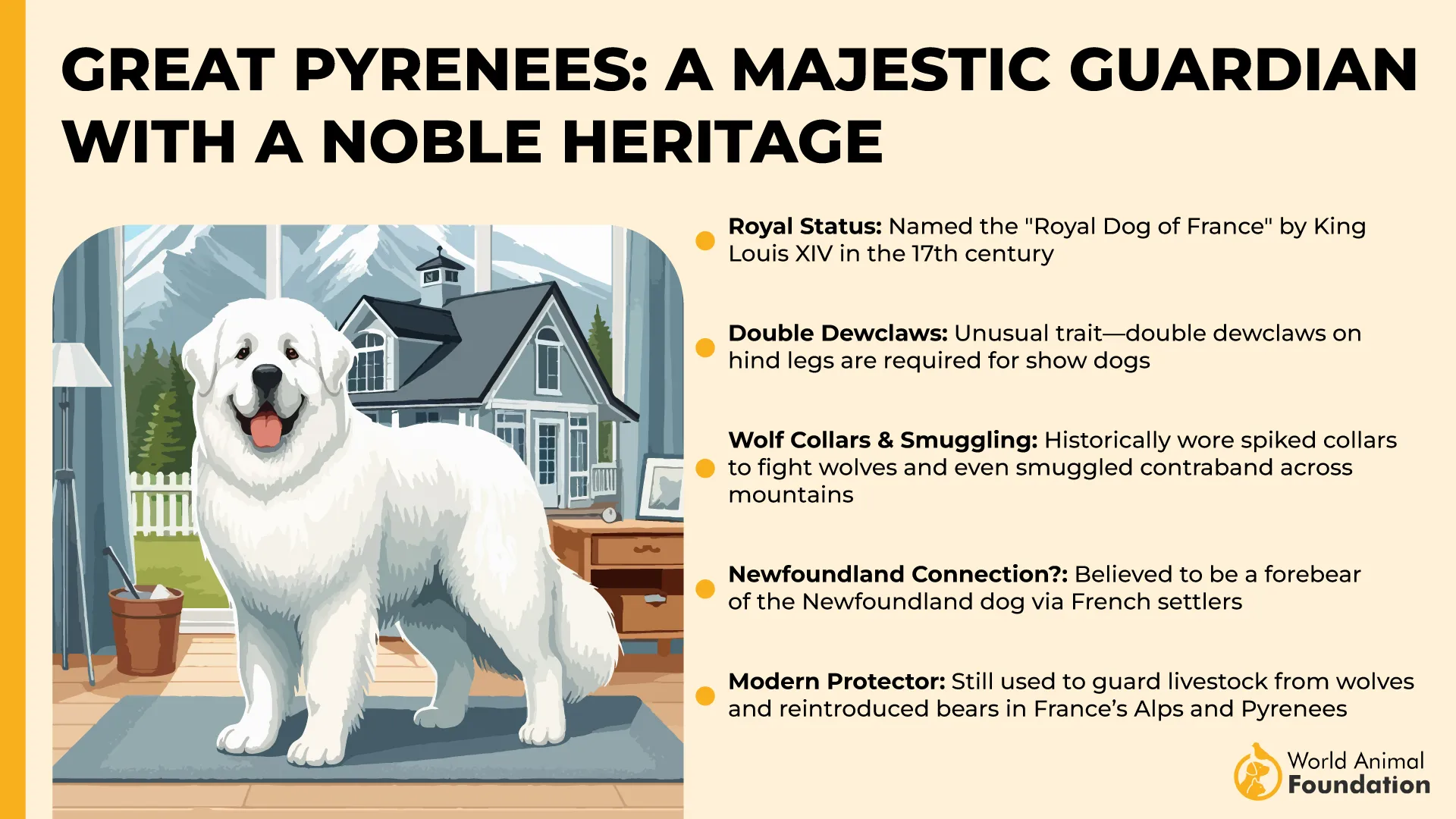
When Extra Toes Are Standard
According to PetMD, removing dewclaws in some breeds like the Great Pyrenees can disqualify them from show competition. Breed standards recognize these extra toes as essential, not optional, firmly rooted in both form and function, and valued as a mark of their true working lineage.
3. Norwegian Lundehund
The Norwegian Lundehund is the most uniquely polydactyl of all dog breeds, born with six fully developed toes on each foot, a trait seen on both the front and back legs.
This rare anatomical setup includes elongated foot pads, which allow for exceptional traction and flexibility on the steep cliffs of Norway, where the breed was developed to hunt puffins.
Cliffside Specialist with Extraordinary Feet
According to the AKC, each Lundehund foot has four toes that point forward and two that angle inward, much like a human thumb.
These specialized digits give the breed a grip on slippery surfaces and help them burrow into tight puffin nests. On flat ground, five of the six toes touch down in front, and at least four do so in the rear.
A Functional Mutation, Not a Flaw
Unlike other breeds where extra toes might seem odd, in the Lundehund, this trait is vital. It’s a brilliant example of evolution crafting a dog for its environment.
4. Briard

The Briard is a powerful French herding breed with a strong work ethic and surprising agility. One of the few dog breeds born with extra toes, the Briard is expected to have double dewclaws on each rear leg, placed low near the foot to function like additional toes.
These extra digits once helped the breed track and turn quickly while guiding sheep across open terrain.
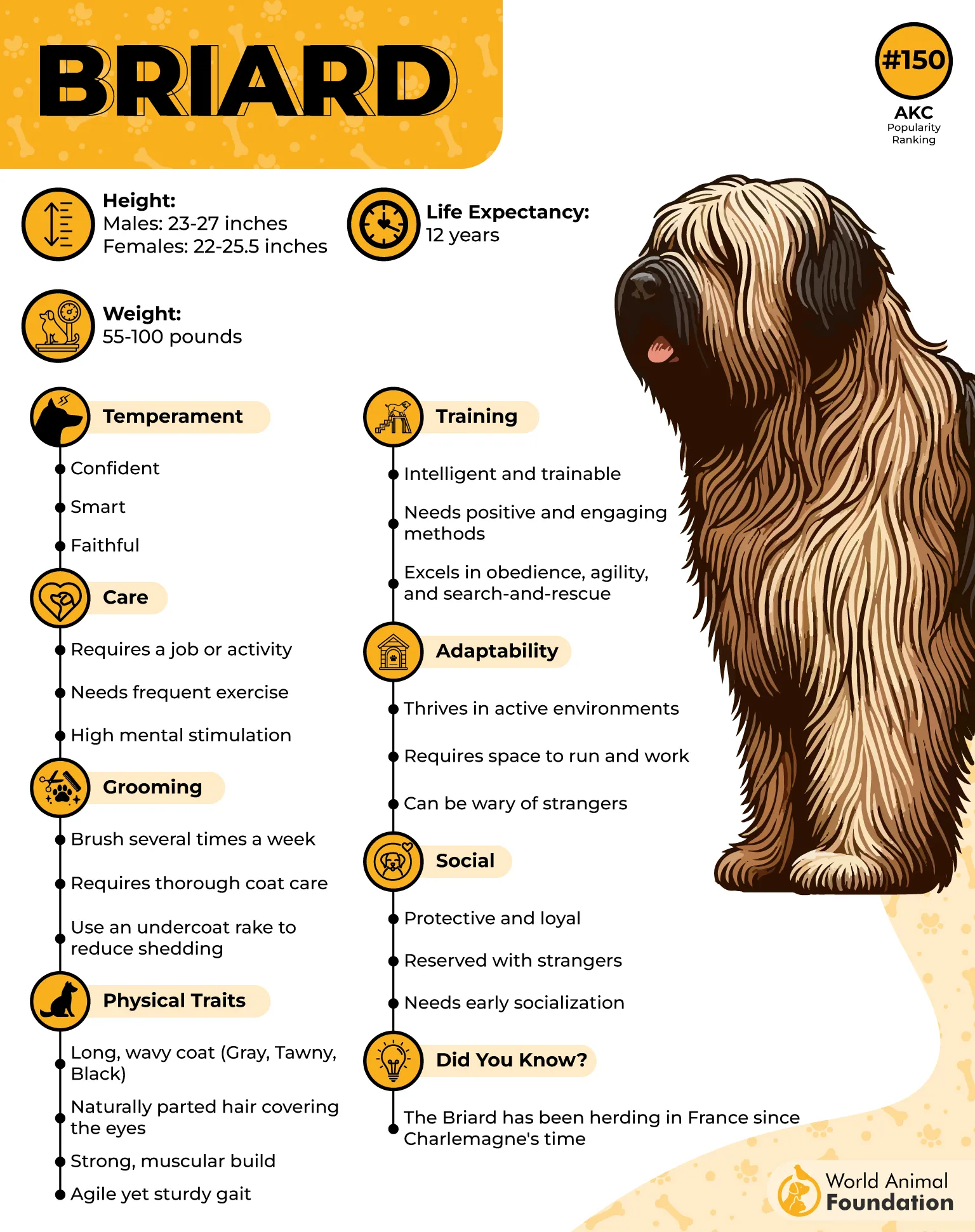
A Standard That Demands Extra Toes
The breed standard requires two dewclaws per hind leg, and anything less results in disqualification from conformation shows. These toes are ideally placed low enough to make ground contact, offering support and stability. While front dewclaws may or may not be present, the rear ones are essential.
Form Follows Function
More than a quirk, these additional digits are a valued trait. They reflect the Briard’s long-standing role as a livestock guardian dog breed, where precision footing and fast maneuvers were essential for managing livestock.
5. Beauceron
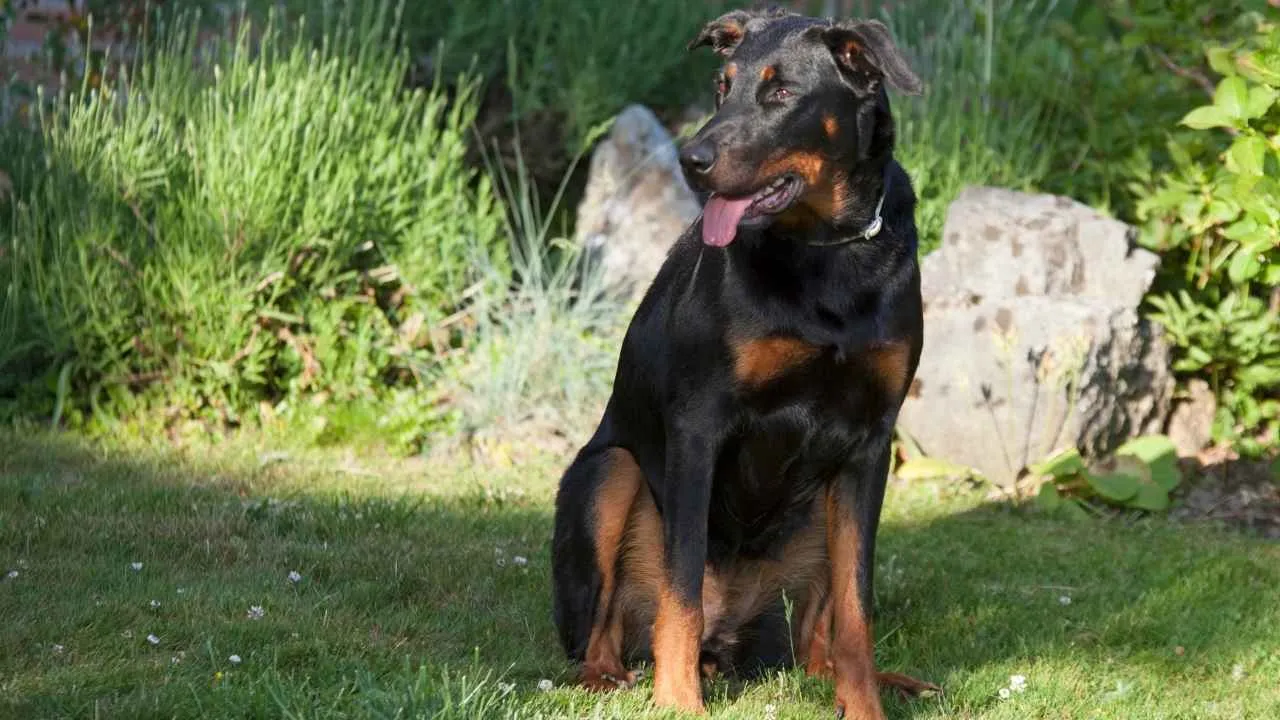
The Beauceron is a large, muscular French working dog known for its confidence, intelligence, and reputation as one of the most versatile herding dog breeds.
One of its most distinctive features is the presence of double dewclaws on each hind leg, positioned close to the foot and resembling well-formed “thumbs” with nails. These extra toes help the Beauceron navigate snow, ice, and uneven terrain with ease.

Function and Structure Matter
These additional digits aren’t vestigial; they’re functional. Set low and clearly separated, the dewclaws aid with traction and agility across rough environments. This feature is deeply tied to the breed’s purpose as a tireless working dog, built for both endurance and precision.
A Disqualifying Detail
The breed standard requires double rear dewclaws on both legs; anything less results in disqualification. These extra toes aren’t just tradition; they’re essential anatomy in the eyes of breeders and judges alike.
6. Saint Bernard
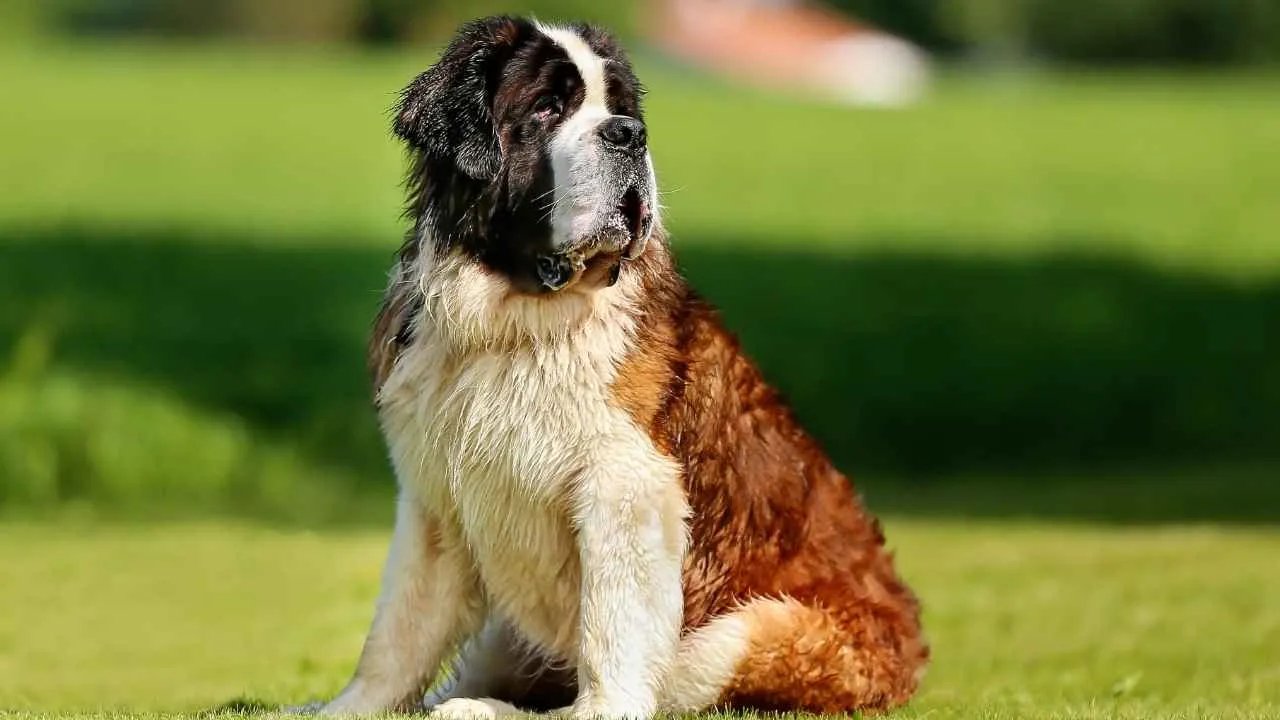
The Saint Bernard is one of the most iconic and beloved working dogs in the world, originally bred to rescue stranded travelers in the treacherous Swiss Alps.
Though polydactyly isn’t widespread in the breed, some Saint Bernards are born with extra toes, typically in the form of single or even double rear dewclaws. These additional digits were likely helpful in providing traction and stability on snow-packed, icy slopes.
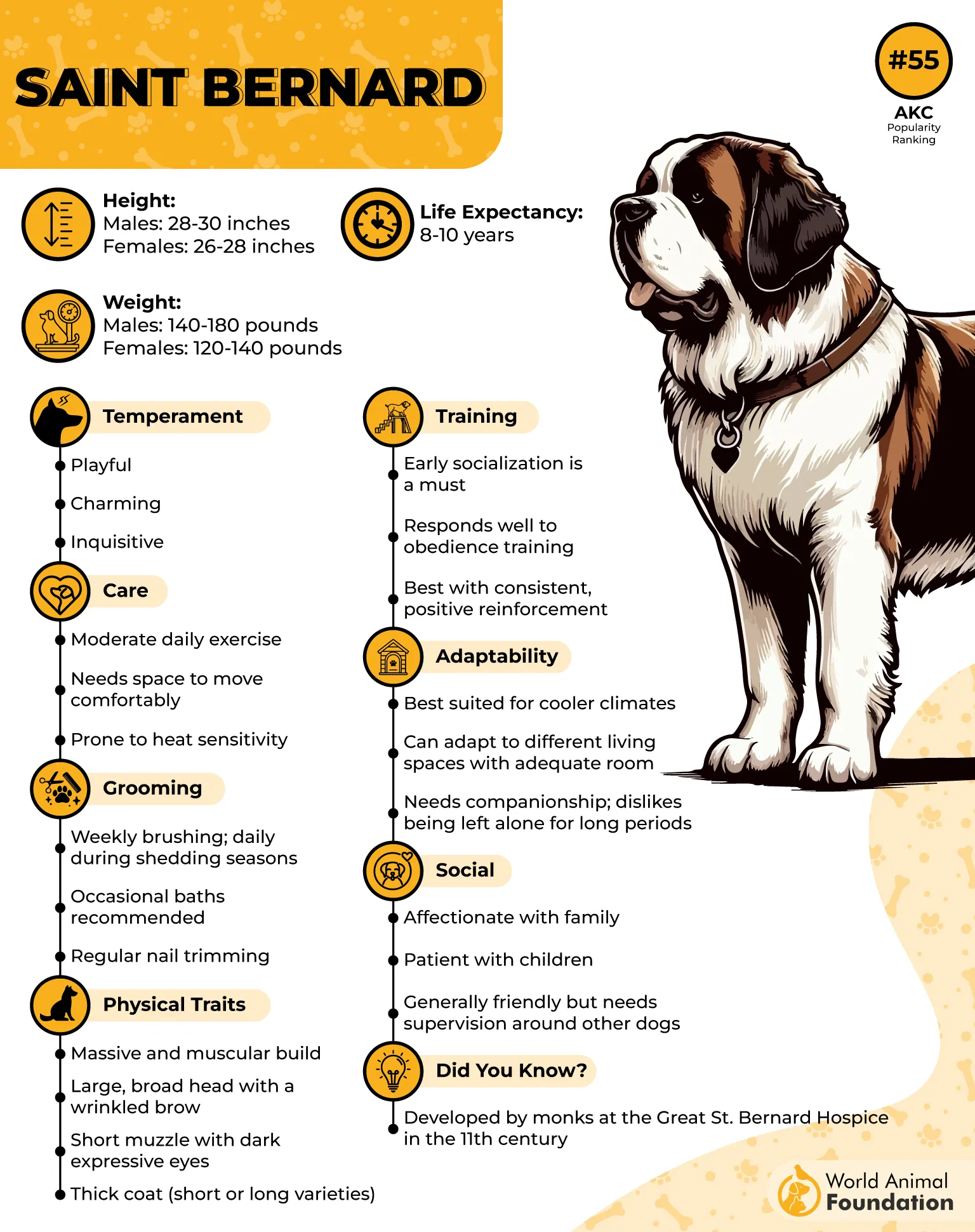
Traction on Treacherous Terrain
In their mountain rescue days, these gentle giants had to navigate slick alpine ground while carrying packs or tracking scents. Though extra toes aren’t required by the breed standard, they may have contributed to better grip and movement across steep or unstable surfaces.
A Rare but Harmless Trait
If your puppy has extra dewclaws, there’s typically no cause for concern. As long as they’re not loosely attached, most veterinarians advise leaving them, especially when they serve a useful function.
7. Estrela Mountain Dog
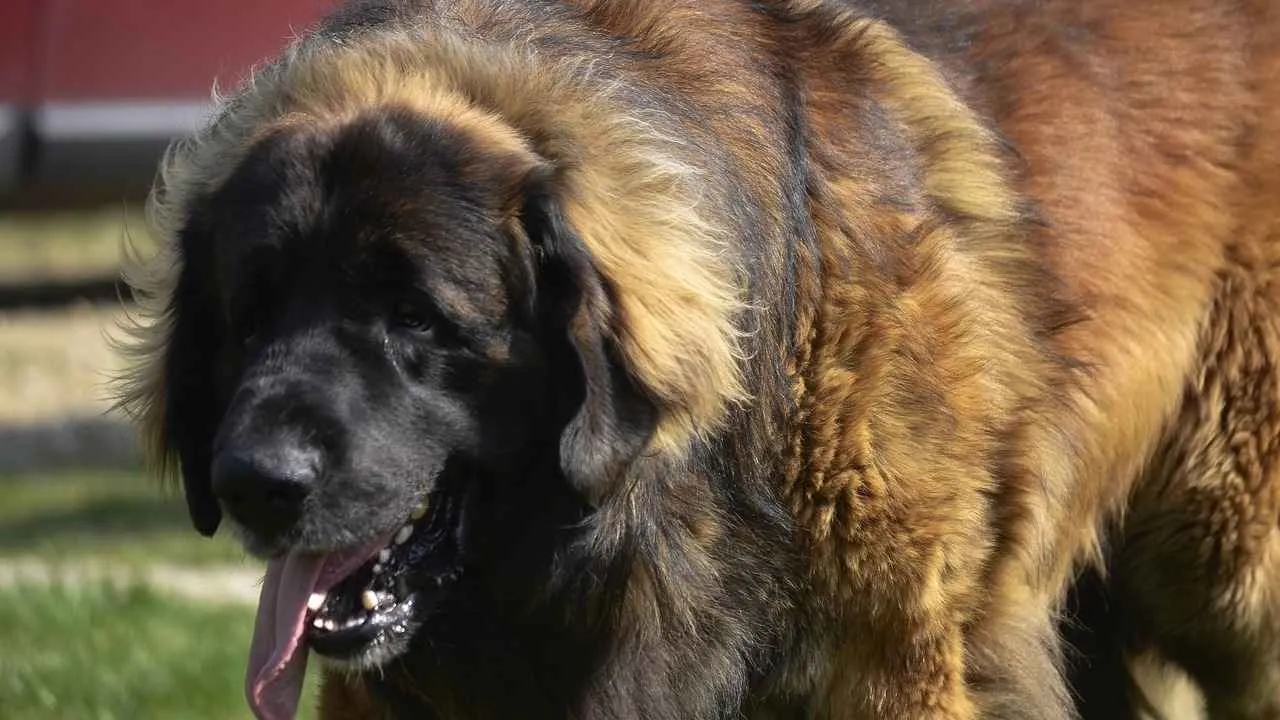
The Estrela Mountain Dog, also known as the Portuguese Shepherd, hails from the rugged Estrela Mountains of Portugal. Bred to guard livestock and homesteads, these protective, large dogs sometimes carry extra toes in the form of single or double rear dewclaws.
These additional digits help provide balance and stability while patrolling steep, uneven ground in high-altitude terrain.
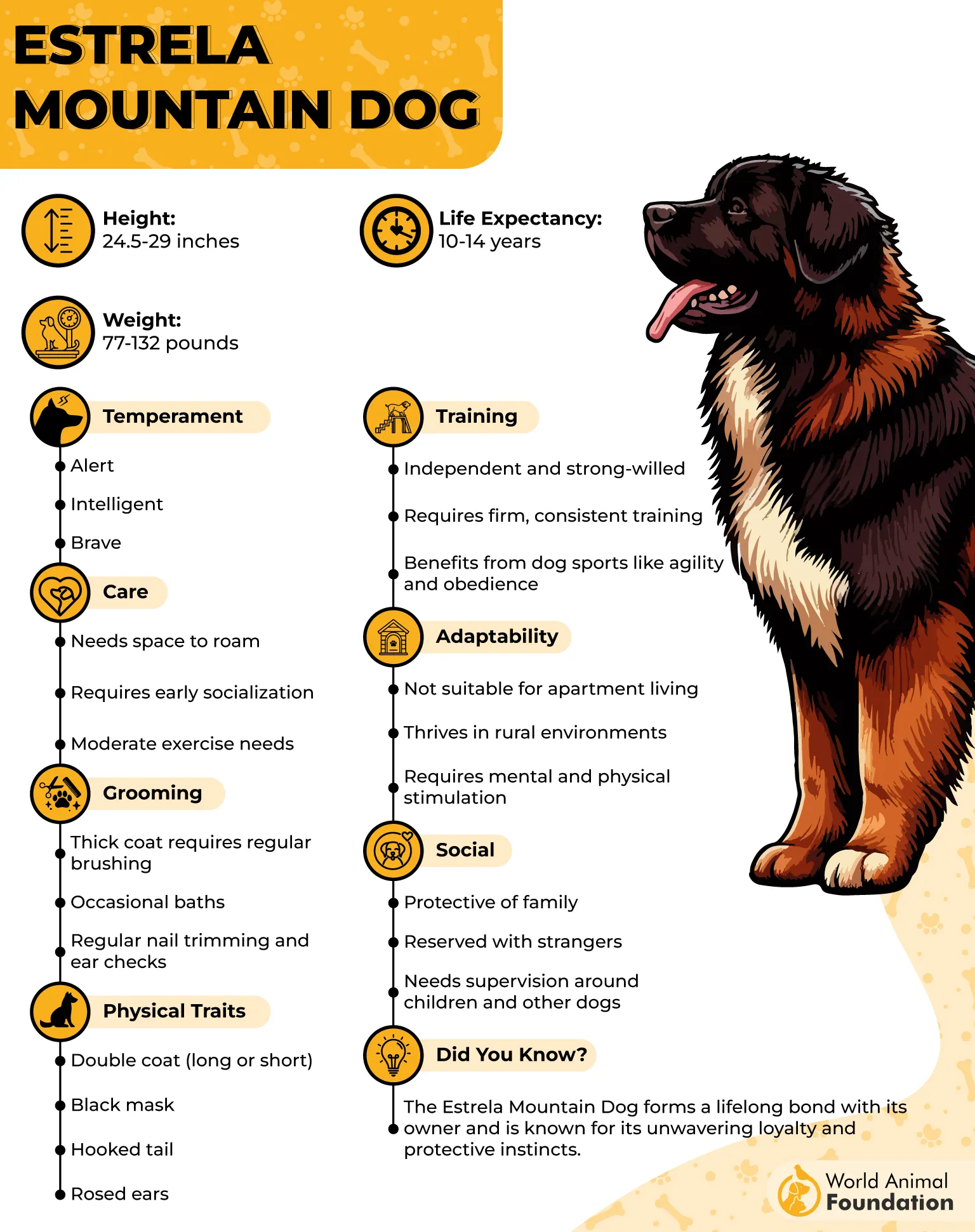
Working Lineage with Natural Advantage
Their dewclaws aren’t just decorative. While not mandatory, the extra toes contribute to better footing and agility, especially useful when chasing off predators or navigating rocky pastures. It’s recommended to keep them clipped, as they don’t wear down naturally like regular nails.
No Need for Removal
Unlike breeds where removal is routine, Estrela dewclaws are usually left intact. They don’t hinder movement and may assist in the breed’s original task: guarding flocks. These pups are strong-willed, loyal, and highly alert, true to their mountain-born, watchdog roots.
Conclusion
From the snow-packed Alps to coastal cliffs, these dog breeds born with extra toes are more than just genetic curiosities; they’re living proof of nature’s smart design. Whether it’s the Lundehund’s six gripping toes or the Briard’s functional double dewclaws, each breed’s extra digits tell a story of adaptation, survival, and purpose.
While polydactyly may seem odd at first glance, it often reflects a breed’s working roots and environmental needs. So next time you spot an unusual paw, remember, it might just belong to a dog whose toes were built not by accident, but by evolutionary intention.


